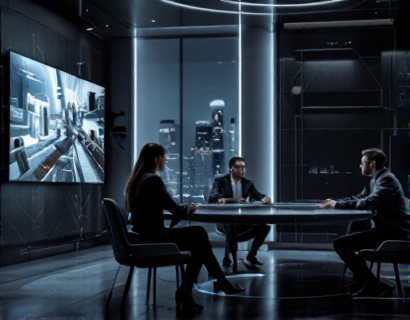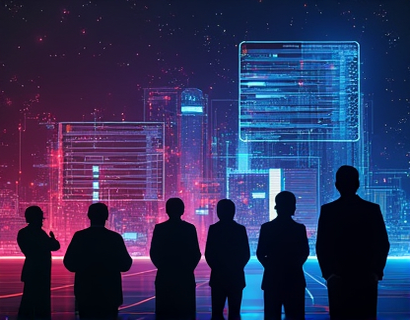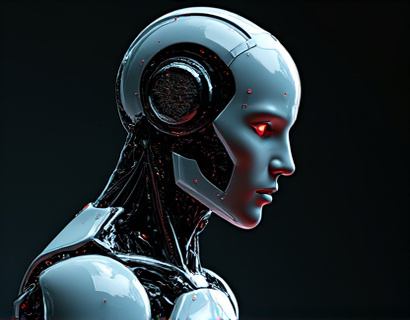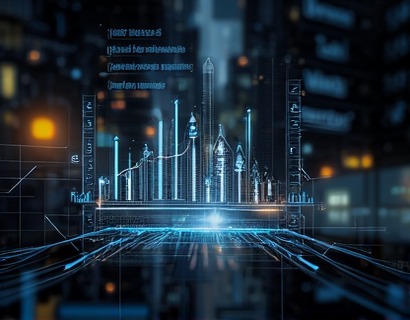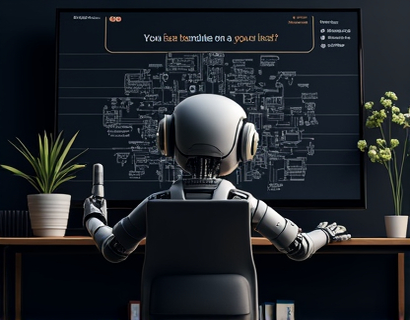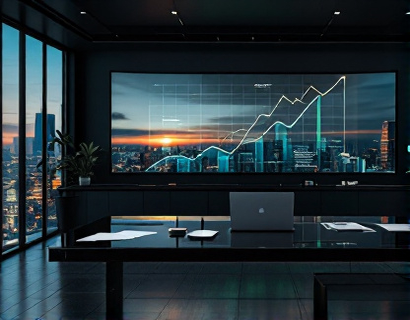Smart Home Elevation: Embracing the Future of Living
In the rapidly evolving landscape of home technology, smart home elevation has emerged as a transformative force, redefining the way we live and interact with our living spaces. The integration of advanced appliances and innovative solutions is not just about convenience; it's about creating a lifestyle that is smarter, more efficient, and deeply personalized. This article delves into the latest innovations in smart home solutions, exploring how these technologies can elevate your home and enhance your daily routines.
The concept of a smart home goes beyond mere automation. It encompasses a holistic approach to home management, where devices and systems work in harmony to optimize energy usage, improve safety, and enhance comfort. The latest appliances are designed with cutting-edge technology, ensuring they are not only functional but also seamlessly integrate into the modern lifestyle. From voice-controlled devices to AI-driven systems, these innovations are reshaping the way we experience home living.
Voice Control: The New Frontier of Home Automation
One of the most significant advancements in smart home technology is the rise of voice control. Devices equipped with voice recognition capabilities allow users to manage various aspects of their home with simple voice commands. This technology has made it easier than ever to control lighting, temperature, security systems, and entertainment devices without the need for physical interaction. The convenience of voice control is unparalleled, making it an essential feature for tech-savvy homeowners.
Smart speakers and virtual assistants have become central hubs in the smart home ecosystem. These devices can learn user preferences and adapt to create a personalized living environment. For instance, a smart speaker can adjust the lighting to a warm glow in the evening, set the thermostat to a comfortable temperature, and even start your favorite music playlist, all with a single voice command. This level of integration not only simplifies daily tasks but also adds a touch of sophistication to home living.
Energy Efficiency: Smart Appliances for a Greener Home
Energy efficiency is a critical consideration in modern home technology. Smart appliances are designed to consume less energy while maintaining high performance, contributing to a more sustainable lifestyle. These devices often come with advanced sensors and algorithms that optimize energy usage based on real-time data. For example, smart refrigerators can monitor internal and external temperatures to adjust cooling settings, reducing energy consumption without compromising food safety.
Smart thermostats are another key player in energy-efficient home management. These devices learn your temperature preferences and adjust heating and cooling systems accordingly, ensuring that energy is used only when necessary. Some models can even integrate with weather forecasts to pre-adjust settings, further enhancing efficiency. By reducing energy waste, these appliances not only lower utility bills but also minimize the environmental impact of home living.
Security Enhancements: Protecting Your Home with Smart Technology
Home security has always been a top priority for homeowners, and smart technology has revolutionized the way we approach this aspect of home living. Smart security systems offer comprehensive solutions that go beyond traditional locks and cameras. These systems can include smart locks, motion sensors, and surveillance cameras that are all connected and controllable via a smartphone app.
One of the most significant advantages of smart security systems is remote monitoring and control. Homeowners can check live camera feeds, lock or unlock doors, and receive alerts in real-time, no matter where they are. This level of connectivity provides peace of mind and enhances the overall safety of the home. Additionally, many smart security systems offer advanced features like facial recognition and anomaly detection, which can help identify potential threats before they become serious issues.
Health and Wellness: Smart Appliances for a Healthier Home
The connection between home technology and health is becoming increasingly evident. Smart appliances are now designed to promote a healthier living environment, addressing various aspects of well-being. For instance, smart air purifiers use advanced filtration systems to remove pollutants and allergens from the air, creating a cleaner and healthier indoor environment. These devices can be integrated with smart home systems to automatically activate based on air quality sensors, ensuring optimal air quality at all times.
Smart kitchen appliances also contribute to a healthier lifestyle. Induction cooktops, for example, offer precise temperature control and faster cooking times, reducing the risk of burns and accidents. Smart refrigerators can track food expiration dates and suggest recipes based on available ingredients, helping to reduce food waste and encourage healthier eating habits. These innovations not only make cooking more convenient but also support a more nutritious lifestyle.
Entertainment Evolution: Smart Home for a Richer Experience
The smart home ecosystem extends to entertainment, offering a richer and more immersive experience. Smart TVs and sound systems are now equipped with advanced features that enhance visual and audio quality. Voice control and smart home integration allow users to seamlessly switch between devices, adjust settings, and access a wide range of streaming services with just a voice command. This level of convenience transforms the way we enjoy entertainment at home.
Smart home theaters are another exciting development, combining high-end audio-visual equipment with sophisticated automation. These systems can adjust lighting, curtains, and seating to create the perfect viewing environment. With the ability to control everything from a central hub, users can indulge in a cinematic experience without leaving the comfort of their home. The integration of smart home technology in entertainment spaces elevates the overall experience, making it more engaging and enjoyable.
Smart Home Integration: The Power of Connectivity
The true power of smart home technology lies in its ability to integrate various devices and systems into a cohesive whole. Modern smart home solutions offer seamless connectivity, allowing different appliances and devices to communicate and work together efficiently. This interconnectedness not only simplifies home management but also enhances the overall user experience.
Central smart home hubs play a crucial role in this integration. These devices act as the brain of the smart home, coordinating and automating tasks across multiple systems. For example, a smart home hub can synchronize the smart thermostat, lighting, and security systems to create a customized scene with a single command. This level of integration ensures that all aspects of the home work in harmony, creating a more efficient and comfortable living environment.
User-Friendly Interfaces: Making Smart Technology Accessible
One of the key factors in the widespread adoption of smart home technology is the user-friendliness of the interfaces. Modern smart home devices are designed with intuitive interfaces that make setup and operation straightforward, even for those who are not tech-savvy. Touchscreen displays, mobile apps, and voice assistants provide multiple ways to interact with smart devices, ensuring that everyone can benefit from the advantages of smart home technology.
For instance, smart home apps allow users to monitor and control devices remotely, receive notifications, and access detailed analytics. These apps are typically designed with a clean and intuitive interface, making it easy to navigate and manage various aspects of the home. Additionally, voice assistants like Amazon Alexa and Google Assistant have become ubiquitous, providing a hands-free and conversational way to interact with smart devices. This accessibility ensures that the benefits of smart home technology are within reach for a broader audience.
Customization and Personalization: Tailoring Your Smart Home
One of the most appealing aspects of smart home technology is the ability to customize and personalize each aspect of the living environment. Smart home systems allow users to tailor settings and automations to suit their unique preferences and lifestyles. Whether it's adjusting the lighting to create a cozy atmosphere or setting up a morning routine that includes brewing coffee and starting the coffee machine, the possibilities are endless.
Smart home devices can also learn from user behavior and adapt over time, creating a more personalized experience. For example, a smart lighting system can remember the times you typically enter and leave the house, automatically adjusting the lights to save energy and enhance security. This level of customization ensures that the smart home not only meets functional needs but also reflects the individuality of its occupants.
Future Trends: What's Next for Smart Home Technology
As smart home technology continues to evolve, we can expect even more innovative solutions to emerge. One of the most exciting trends is the integration of artificial intelligence and machine learning into smart home systems. These advanced technologies can provide deeper insights and more predictive capabilities, further enhancing the efficiency and personalization of smart home devices.
Another area of development is the expansion of IoT (Internet of Things) connectivity, allowing for even more devices to be integrated into the smart home ecosystem. This will create a more comprehensive and interconnected living environment, where every device works together to optimize daily routines and enhance comfort. Additionally, advancements in energy storage and renewable energy sources will continue to support the growth of energy-efficient smart homes.
The future of smart home technology is bright, with ongoing innovations promising to make our living spaces more intelligent, sustainable, and enjoyable. As these technologies become more accessible and user-friendly, the potential for transforming home living is immense.
















